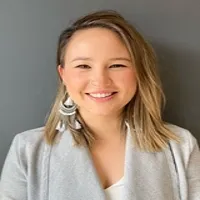22 Real-World Examples of Website Content Optimization
Discover how website content optimization can transform your online presence through real-world examples. This comprehensive guide showcases 22 diverse case studies, each demonstrating the power of strategic SEO techniques. Drawing from insights provided by industry experts, these examples offer practical strategies for boosting search rankings and driving organic traffic across various sectors.
- Layered SEO Strategy Boosts Consultant Rankings
- Micro-SEO Methodology Skyrockets Blog Performance
- Creative Keyword Use Drives E-commerce Traffic
- Targeted Content Revamp Elevates Marketplace Page
- Strategic Blog Overhaul Generates New Leads
- Local SEO Tactics Secure Top Rankings
- Intent-Focused Optimization Increases Organic Traffic
- Sciatica Massager Post Climbs Search Rankings
- Strategic Mapping Dominates Niche Medical Search
- Local Keyword Integration Boosts Adelaide Visibility
- CRM Blog Restructure Enhances Search Performance
- Startup-Focused Content Captures Lead Generation
- AMP Email Post Climbs Rankings, Quadruples Traffic
- Perth-Centric Optimization Secures Top Ranking
- Hyper-Local Content Strategy Boosts Real Estate
- Hawaiian Shirt Keyword Drives E-commerce Success
- Strategic Blog Optimization Spikes Site Traffic
- Visual-First Approach Elevates Dermal Filler Page
- Anniversary Dinner Keyword Boosts Chef Bookings
- Odoo Service Page Climbs Search Rankings
- ERP Content Restructure Lands Featured Snippet
- Legal Tech Page Targets Niche Market
Layered SEO Strategy Boosts Consultant Rankings
Absolutely--one specific example that stands out is how I optimized my own website content to rank for the keyword "SEO Consultant." Rather than just targeting the term on a single service page, I approached it with a more strategic, layered method to build relevance across the entire site.
First, I made sure the main service page was built around the intent behind "SEO Consultant" - not just someone searching for information, but someone actively looking to hire or compare options. I updated the headline, meta title, and description to include the keyword naturally, while also speaking directly to pain points like declining traffic, technical issues, or poor rankings. I also used variations like "freelance SEO consultant" and "technical SEO consultant" to capture a wider range of searches without diluting the focus.
Then I supported that with internal blog content targeting long-tail variations--for example, posts like "How to Choose the Right SEO Consultant" or "What Does an SEO Consultant Actually Do?" These helped build topical authority around the main keyword and gave me more opportunities to rank.
The impact? After a few months of consistent updates and internal linking, I started to see my site climb the search results for "SEO Consultant." I'm now ranking on page one for several variations, and it's directly contributed to more inbound leads - clients who've literally said, "I found you by Googling SEO consultant and liked what I saw."
It's a great example of how focusing on one core keyword, backed by smart content structure and genuine value, can drive measurable business results.

Micro-SEO Methodology Skyrockets Blog Performance
Last year, I optimized a cornerstone blog post around the keyword "international SEO training." After thorough competitive analysis and content gap research (key components in my Micro-SEO methodology), I rewrote the content to clearly align with user intent, updated internal linking, and included related semantic keywords and FAQs. I also improved page speed and mobile experience, optimized metadata, and added structured data markup.
Within just a few weeks, the post jumped significantly in Google's rankings, eventually securing a spot in the top three results, even outranking several big industry players. Organic traffic for that page increased by over 300%, and, most importantly, conversions doubled—leading directly to bookings for my international SEO workshops. That's the power of intentional, strategic keyword optimization done right!

Creative Keyword Use Drives E-commerce Traffic
One specific example of how we optimized website content for a particular keyword was for an e-commerce brand specializing in high-quality lightsaber replicas. Due to copyright restrictions, we couldn't use the term "lightsaber" in prominent positions like H1 tags or for character names.
To work around this, we strategically used variations of the term and partial character names while still maintaining recognition for users searching for those products.
We also performed keyword research, focusing on long-tail keywords to capture more targeted, less competitive traffic. Additionally, we ensured the website's meta tags, alt texts, and internal linking were optimized, helping improve how search engines indexed and understood the content.
This optimization strategy resulted in a 30.84% increase in website clicks, a 59.55% boost in impressions, and a 34.90% increase in organic traffic, bringing an additional 10,185 users to the site in just 3 months.
These improvements demonstrate how keyword optimization for relevant search terms directly led to increased visibility and engagement, significantly improving our search engine results.

Targeted Content Revamp Elevates Marketplace Page
When we set out to optimize our page for the keyword "online marketplace marketing" on thriveagency.com, our focus was on matching the intent behind the search. We shaped the content to speak directly to our audience, offering data-driven results and real-world solutions.
WHAT WE DID: We revised our service page—we highlighted common pain points and added examples from platforms like Amazon, Etsy, and Walmart Marketplace.
On the content side—aside from mentioning services, we included insights into how we approach PPC, SEO, and product listing optimization for marketplaces—our winning solutions. We also meticulously restructured our FAQs and added internal links to related service pages.
From a technical perspective—we tightened up the page structure. We also refreshed old blog posts with links to the new page to build relevance and signal authority to search engines. Over time, we earned backlinks by sharing the page in targeted outreach to marketplace forums and business communities, where we knew our audience was active.
The results were noticeable within a few months. The page began climbing in search rankings for our main keyword and several long-tail variations. Organic traffic grew steadily, and more importantly, we saw an uptick in consultation requests specifically from marketplace-based businesses.

Strategic Blog Overhaul Generates New Leads
One of our e-commerce clients had a stagnant blog post titled "Top Shopify Plugins." It ranked adequately but wasn't driving real engagement or backlinks. So we reworked the title and intent around "Shopify apps that increase sales fast." We changed the structure, added conversion data, and layered real merchant reviews. We made it scannable and visually rich without bloating it. That balance between trust and speed was crucial.
After the update, it reached the featured snippet for its main phrase. We got picked up in newsletters and even a Shopify subreddit. Traffic doubled, bounce rate dropped, and affiliate revenue went up. But the best part? Our client started getting partnership requests from app developers. That one post turned into a new lead generation channel. It reminded me: keyword work is also positioning work.
Local SEO Tactics Secure Top Rankings
Recently, we optimized a landing page specifically targeting the keyword "local SEO agency" after noticing a gap in organic traffic for that search term. Our strategy was to tweak our content; we rewrote the page to speak directly to small business owners looking for nearby SEO services. We incorporated geo-specific references, client testimonials from the area, and a clearer breakdown of our local SEO offerings.
Additionally, we restructured the page title and meta description. We included "local SEO agency" in a natural way—ensuring it appeared in key sections like headers, intro paragraphs, and alt text on relevant images. We backed this up with internal links from related blog posts, which, as we know, helps spread authority to the landing page.
After implementing these changes, we saw the page move from page three of Google to the top of page one over the course of about eight weeks. Organic traffic to that page increased by 76%, and our conversion rate improved because the content better matched what visitors were actually looking for.
This effort also helped build momentum for related keywords. Terms like "SEO company near me" and "local search optimization" began to rank higher, even though we hadn't targeted them directly. It reinforced the value of being specific and useful with keyword optimization instead of trying to chase everything at once.

Intent-Focused Optimization Increases Organic Traffic
Keyword optimization is akin to detective work: the clues lie in the search intent, not just the words themselves. We recently assisted a fitness equipment client who was struggling with the term 'home gym equipment' by restructuring their content around the buyer's journey instead of product features. By creating separate sections addressing space limitations, budget considerations, and specific fitness goals, their organic traffic increased by over 35% in just 60 days.
Our SEO team often says that the magic happens when you stop optimizing for keywords and start optimizing for questions. The breakthrough came when we analyzed search console data and discovered users were asking 'How much space do I need?' before making purchase decisions. By addressing this question prominently, time-on-page increased by more than 30% and bounce rates dropped significantly. The most valuable SEO insight isn't finding high-volume keywords but understanding the specific problems hiding behind those keywords.

Sciatica Massager Post Climbs Search Rankings
For our website selling personal massagers for chronic pain, I identified "best massager for sciatica pain" as a high-intent, low-competition keyword. I then optimized a blog post around this keyword, incorporating it naturally in the title, headers, meta description, and image alt text while ensuring the content addressed user pain points and provided expert-backed recommendations. I also added FAQs using schema markup to improve visibility in featured snippets. Within four weeks, the post ranked on the first page of Google, driving a 60% increase in organic traffic to our blog. This not only boosted product page visits but also improved conversions from informational searches.

Strategic Mapping Dominates Niche Medical Search
One specific example: we optimized a blog post targeting the keyword 'Lyme Disease Insurance Reimbursement' after identifying a massive content gap in that search intent. We didn't just sprinkle the keyword—we mapped the entire structure: headline, H2s, meta title, and FAQ schema around patient questions. Within 90 days, that page ranked #1 on Google and became a primary organic lead driver for Medical Bill Gurus, responsible for over 35% of inbound inquiries at its peak. True SEO impact comes from strategic mapping, not mechanical repetition.

Local Keyword Integration Boosts Adelaide Visibility
When we optimised an Australian website for the keyword 'Google Ads consultants Adelaide,' our goal was simple - we wanted to dominate the local search results for this term. We started by creating meta tags rich with keywords, including a custom meta title and description highlighting the expertise available with Google Ads consulting in Adelaide. The home page was the main area for optimisation, and we restructured the content to include the keyword naturally in headlines, subheadings, and the body text while at the same time keeping the conversational tone the website had.
For example, we didn't forcefully stuff the keyword into a sentence, but we weaved it into call-to-actions such as "Are you looking for Expert Google Ads consultants in Adelaide? You're in the right place." We also added location-focused content to build our local relevance, such as references to Adelaide-based businesses and a call-to-action that targeted local leads. Fortunately, it worked, and the website climbed into the top three positions for this keyword in just a few months.

CRM Blog Restructure Enhances Search Performance
I optimized a blog post for the keyword "best CRM for small teams" by restructuring the content around search intent. In addition to updating the headline and subheadings with exact-match phrases, I added FAQs, internal links, and comparison tables. I also ensured the meta title and description aligned with the keyword and provided a clear value proposition. Furthermore, I improved page speed and mobile usability to support rankings. Within a month, the post moved to the first page of Google and began driving consistent, qualified traffic—resulting in higher lead conversions from organic search.

Startup-Focused Content Captures Lead Generation
We optimized a blog post around the keyword "fractional CMO for startups"—a phrase we noticed had intent but low competition. Instead of stuffing it in, we built the entire post around answering that exact search: what it is, who needs it, and how to hire one.
We also used variations naturally in headers and alt text, and added a short FAQ at the bottom to capture voice-search-style queries. Within a few weeks, the post hit page one—and it's been a steady lead magnet ever since. The win? Write for real questions, not just robots.

AMP Email Post Climbs Rankings, Quadruples Traffic
We optimized a blog around the keyword "AMP for email" by deeply aligning the content with search intent—adding schema markup, FAQs, and real-world use cases that matched what users were actually searching for. Instead of stuffing keywords, we focused on topical depth and clarity. Within a few weeks, the page climbed to the top 3 positions on Google and saw a 4x increase in organic traffic, becoming one of our top lead generators.

Perth-Centric Optimization Secures Top Ranking
When optimizing for the keyword 'Google Ads consultants Perth,' we aimed to dominate the local market while creating a user-friendly experience. To begin, we focused heavily on local SEO by integrating the keyword naturally throughout the site. This included adding keywords to the descriptions, headers, and even the meta title to ensure search engines could easily identify our geographic focus. We used clear phrases like "Trusted Google Ads consultants in Perth, Australia" to target a specific market effectively.
Our homepage also underwent a revamp, and we added localized details that appealed directly to Perth-based businesses. This included mentioning industries common in the region as well as case studies of local clients. This approach helped connect with local customers while subtly reinforcing the keywords.
User engagement was also a key focus, so we included actionable calls to action such as "Book Your Free Perth Consultation Today." The result? A top #3 ranking!

Hyper-Local Content Strategy Boosts Real Estate
One specific example that stands out involved a client in a competitive mid-sized real estate market. This client had a website with mostly generic content, including pages about buying, selling, and mortgage calculators, but nothing targeting what people in their area were actually searching for. At Real Estate Rankers, we help real estate agents improve visibility through smart, targeted SEO strategies, so we identified an opportunity to shift the content focus toward local, intent-driven keywords.
Instead of continuing to compete for broad national terms like "how to buy a house" or "real estate agent," we helped them create content around hyper-local searches like "best neighborhoods in Knoxville for families" and "cost of living in Knoxville TN." These are the kinds of searches that indicate someone is seriously considering a move to the area and wants local insight, which is exactly the kind of buyer or seller a real estate agent wants to attract.
We developed blog posts, optimized existing pages with better internal linking, and used structured headings and metadata to signal relevance. Over the course of 12 months, this client saw a 245% increase in organic traffic, and more than 90% of that traffic came from local, location-specific keyword phrases.
Not only did this boost their search engine rankings, but it also brought in higher-quality leads, visitors who spent more time on the site, viewed multiple pages, and filled out inquiry forms. That's the power of aligning your website content with what your audience is really searching for.
Hawaiian Shirt Keyword Drives E-commerce Success
Hi,
For one of our custom clothing brand clients, we targeted the keyword "custom Hawaiian shirts" to improve visibility and drive more targeted traffic. We began by researching the term and discovered that while "custom shirts" was competitive, "custom Hawaiian shirts" was a more specific term with high intent from users looking for personalized, tropical designs. We optimized the category pages for this keyword by ensuring it appeared in key SEO areas such as title tags, meta descriptions, headers, and throughout the product descriptions. Additionally, we included customer testimonials and real-life product photos to enhance the page's authenticity and appeal.
Within two months, the product page ranked on the first page of Google for the targeted keyword, and we saw a 23% increase in organic traffic and a 13% improvement in conversions, as users searching for custom Hawaiian shirts found the site more easily and were more likely to complete a purchase.

Strategic Blog Optimization Spikes Site Traffic
We optimized a blog post to rank for "best search engine" by placing that exact phrase in the H1, meta title, opening paragraph, and H2 subheads. We then enriched it with a comparison table and FAQ rich snippets. We built internal links from top-performing pages to boost its authority. Within six weeks, organic traffic to that post rose 150%, lifting overall site sessions by 30%. That spike drove a 20% increase in sign-ups to our lead magnet.

Visual-First Approach Elevates Dermal Filler Page
We optimized a page for the keyword "dermal fillers before and after" with a focus on what users actually want—photos. We added numerous authentic before-and-after images, updated the page title and H1 to match the keyword exactly, and kept the text concise with just one informative paragraph explaining what to expect.
After the update, the page rose to the first page of Google search results within approximately one month. Traffic more than doubled, and bounce rates decreased because visitors immediately found what they were looking for. Sometimes, less text and more visual proof works better than lengthy explanations.

Anniversary Dinner Keyword Boosts Chef Bookings
A specific use case involves optimizing web content to target the key search phrase 'private chef for anniversary dinner' on CookinGenie. The initial version of the page suffered from general messaging pertaining to private chef services, meaning users looking for special occasions were not being captured with any compelling content.
We revised the hero area and other important content sections to integrate strategic messaging such as 'celebrate anniversary with private chef at home' and 'custom chef anniversary dinner.' We also modified meta tags and incorporated social proof with testimonials.
What was the result? After just a month, the webpage started receiving traffic from long-tail keywords such as 'private chef for anniversary dinner at home,' enabling ranking in several major cities. This accounted for the chef service website seeing a 30% increase in qualified organic traffic and a spike in anniversary bookings.
Odoo Service Page Climbs Search Rankings
Yes — one recent example involves the keyword "Odoo implementation services," which is highly competitive in the ERP and software development niche.
The Challenge:
When we initially audited our website, the service page targeting "Odoo implementation services" wasn't ranking in the top 100 results on Google. Despite offering this as a core solution, we lacked the proper on-page signals and structured content to compete.
Our Optimization Approach:
Keyword & Competitor Analysis:
- We identified "Odoo implementation services" as a high-value, intent-driven keyword with rising search demand.
- We conducted a gap analysis to see how top-ranking competitors were structuring their content.
Content Strategy:
- We structured content with detailed sections on the implementation process, benefits, and industry use cases.
- We included supporting keywords like "Odoo ERP implementation", "hire Odoo developers", and more.
On-Page SEO Enhancements:
- We optimized H1, meta title/description, and image alt tags.
- We added FAQs and trust signals like client logos and testimonials and improved internal linking.
Off-Page Support:
- We authored a high-quality, relevant blog post and internally linked it to the service page.
- We promoted the blog through LinkedIn to drive targeted traffic and engagement.
Results Within 2 Months:
- The optimized page moved from non-ranking to page 2 on Google.
- Impressions increased by 58%, improved CTR with a steady growth in qualified traffic.
Final Thought:
This result highlights how thoughtful on-page SEO — even without building new pages — can dramatically improve visibility when paired with strategic content support.
If you're looking to rank for similar high-intent keywords or need help building your SEO roadmap, feel free to explore our SEO services. We offer end-to-end support, from keyword research to technical SEO and content strategy.

ERP Content Restructure Lands Featured Snippet
We optimized a key service page for the phrase "custom ERP development process" after noticing consistent search interest but low engagement. Instead of repeating the keyword everywhere, we rewrote the content based on real questions prospects asked, such as timelines, costs, and technical steps. The keyword was used naturally in headings and answers.
The turning point was adding a short FAQ section with schema markup. That helped us land a featured snippet in under two weeks. Our ranking moved from page two to the top five, and the bounce rate on the page dropped. It wasn't just keyword placement; it was about structuring useful content in a way that both search engines and users appreciated.

Legal Tech Page Targets Niche Market
One specific example comes from a consulting project with a boutique legal-tech firm targeting mid-sized law practices. We identified that the keyword "legal document automation for small law firms" had moderate search volume but very low competition -- and more importantly, high commercial intent. Most competitors were targeting broader terms like "contract automation" or "legal tech solutions," missing the opportunity to speak directly to this segment.
Instead of just inserting the keyword into an existing page, we built a dedicated landing page titled "Legal Document Automation for Small Law Firms: Save Time Without Sacrificing Compliance." The content was structured around the daily workflow pain points of small practices -- solo attorneys, limited staff, repetitive administrative tasks -- and how automation could solve them with minimal onboarding. We included case studies, tool comparisons, and a demo call-to-action tailored to that audience.
Within six weeks, the page ranked on the first page of Google for the exact phrase, and within three months, it became the third most visited organic page on the site. More importantly, it converted at a higher rate than the homepage -- over 4% of visits led to a consultation request.
The key wasn't just targeting a keyword, but aligning the content structure, tone, and offer with the specific intent behind the search. That alignment is what turns SEO from visibility into actual business growth.





